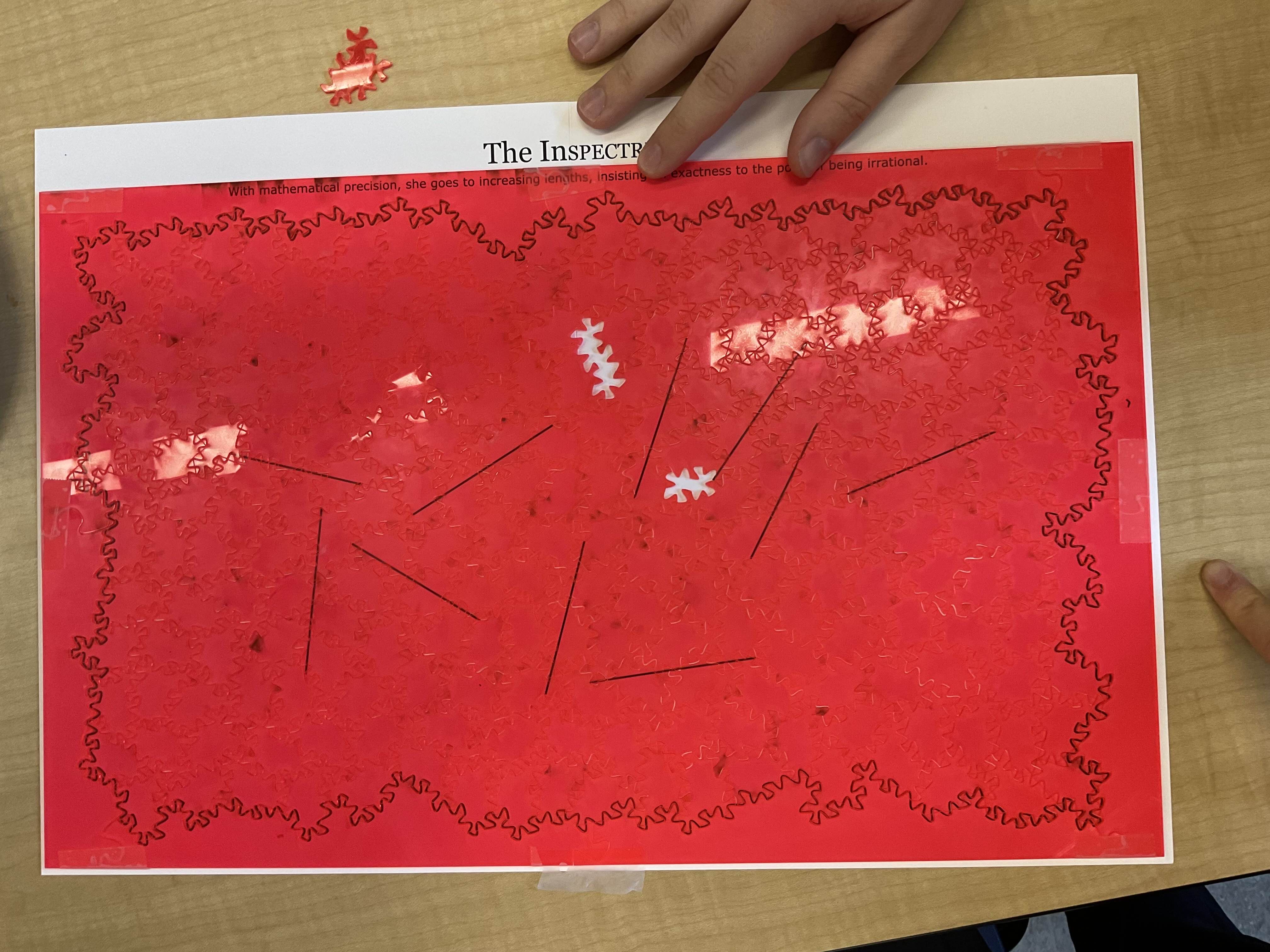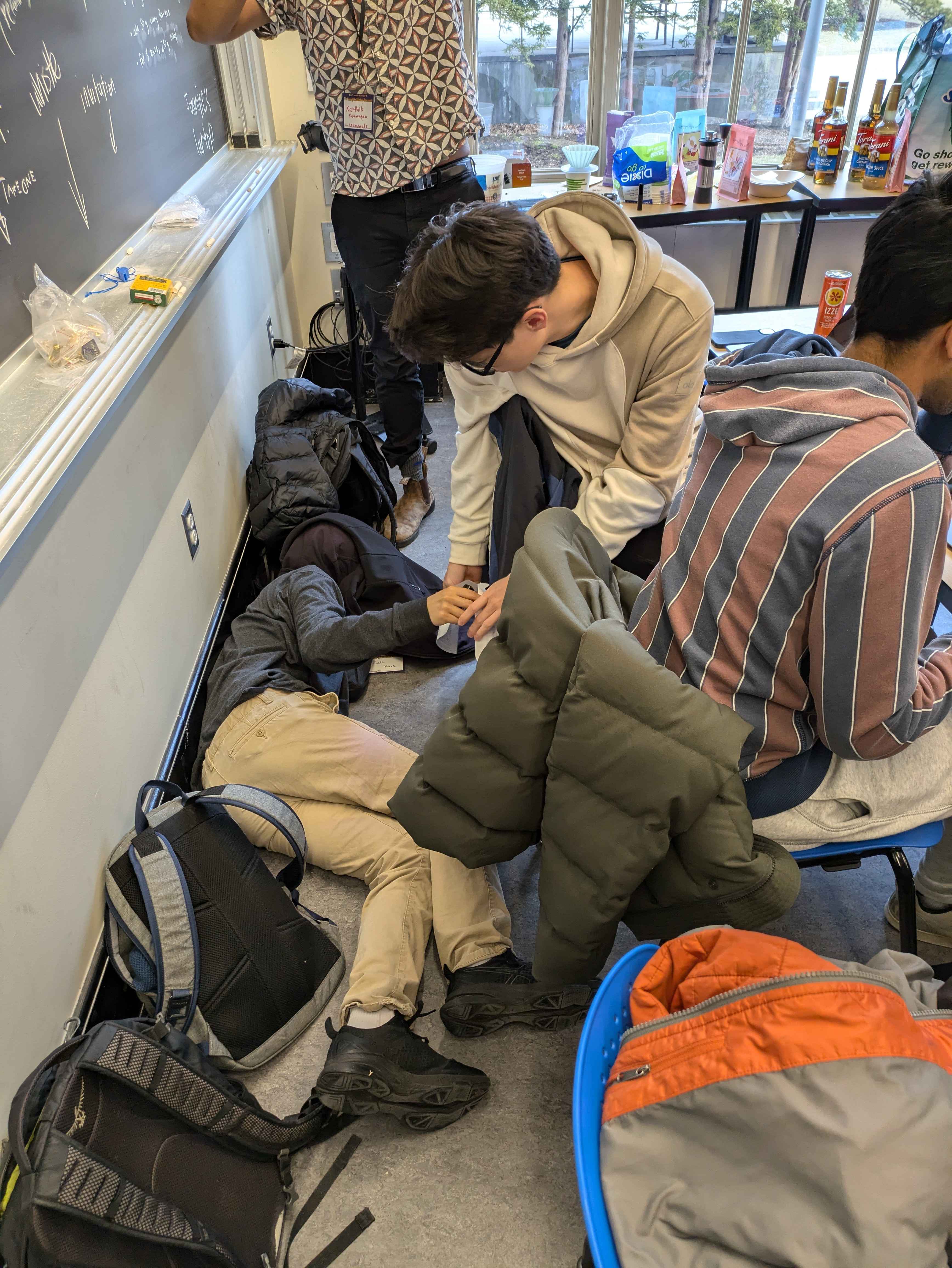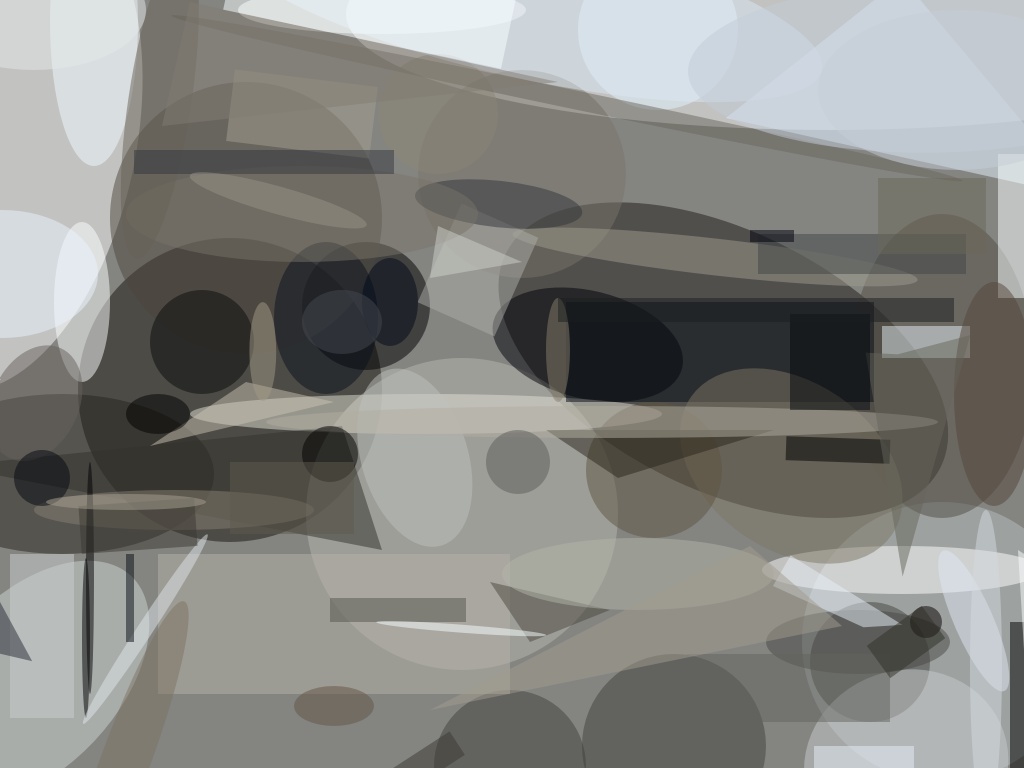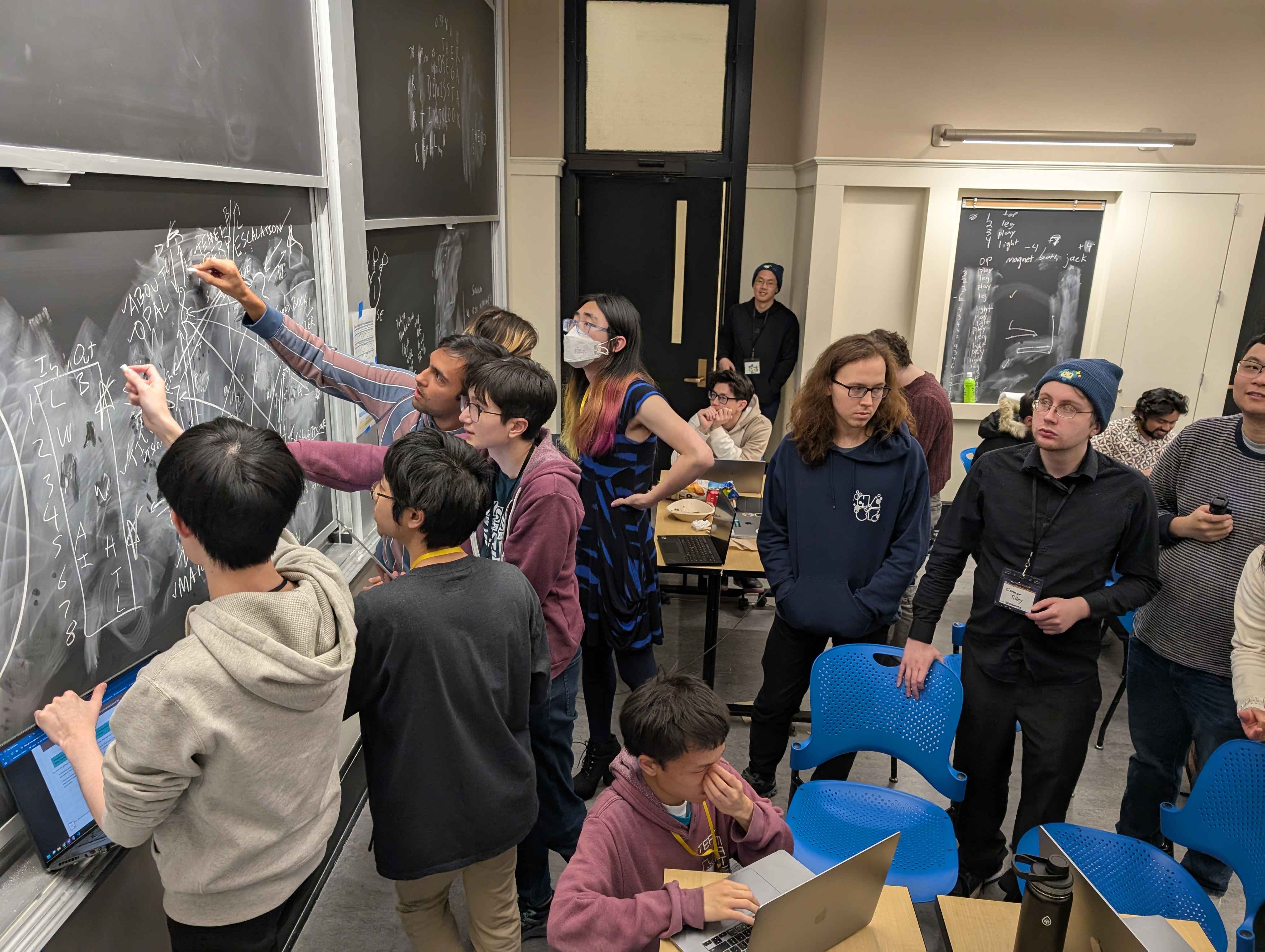Mystery Hunt 2025
Jan 26, 2025This post is about the 2025 MIT Mystery Hunt. You can see the hunt website with most of the puzzles and solutions at two-pi-noir.agency.
My two favorite Mystery Hunts are the 2015 hunt (20,000 puzzles under the sea) and the 2018 hunt (Operation: Head Hunters). Death & Mayhem wrote the latter, so I was super hyped for this year’s hunt, which was also written by them. Overall, it largely met my lofty expectations, while maybe not quite ranking as my favorite hunt of all time.
What I look for in Mystery Hunts
When reflecting on why I enjoyed 2018’s hunt so much, I’m reminded of this comment from Noah Snyder on Puzzlvaria left in a discussion about the 2017 Mystery Hunt:
One thing I like to get out of a mystery hunt, in addition to a couple days of solving fun puzzles with friends, is the feeling that at some point our team overcame a great challenge. I don’t want that feeling constantly, but I do want it once or twice.
More so than “hard puzzles” or “lots of puzzles” this is the feeling I seek from hunt: a truly difficult (but fair) task that we manage to solve as a team. This can come in the form of individual puzzles, but given the nature of Mystery Hunt where the metas are so important for progress and attention on individual puzzles is usually divided, it’s most often the metas that scratch this itch for me.
In last year’s hunt (which I failed to write a post about), the Gaia and Hell metas came closest to capturing this feeling, but because they were just two of 13 rounds in the overworld section, they didn’t land quite the same punch as say, the Sci-Fi meta from 2018.
This year, after an appropriately straightforward introductory round, Death & Mayhem presented us with 5 rounds each of which had a difficult (sometimes ridiculous) supermeta and a structural gimmick:
-
The Stakeout had 41 “fish” puzzles capped with a meta that involved finding hidden notes in MIT’s main group buildings.
-
The Paper Trail had 8 submetas, each of which used the answers to individual puzzles as well as the answers to each others’ submetas (sometimes more than once!), and had a supermeta that involved this graph structure.
-
The Background Check’s supermeta asked you to resize an image according to resolutions specified by the submeta answers to intentionally produce subtle aliasing artifacts. This actually allowed you to backsolve a submetas once they figured out what was going on (and indeed, we backsolved one), but—in a testament to great puzzle design—this didn’t help you very much, as the nature of the revealed image required you to understand how to forward-solve the submetas anyways.
-
The Illegal Search was structured as a virtual escape room: puzzle answers could be entered as codes to various locks in the room. I missed out on this round entirely but it looked super cool.
-
Finally, The Murder in MITtroplis was an elaborate reference to Cain’s Jawbone, a murder mystery puzzle consisting of 100 pages arranged in the wrong order. Every time we solved a puzzle in this round we were presented with a page from a narrative; we had to reorder the pages in order to extract the final answer.
Solving any one of these rounds felt like a real accomplishment, and each solve contributed to the momentum building up over the course of the weekend. I didn’t love all the metas presented in these rounds (many of them failed to distinguish story flavor from puzzle content: the notes under the benches in Chinatown, the entirely superfluous “Notes” in The Paper Trail, and maybe all? of The Killer?), but I appreciated their ambition and complexity.
What other people seem to look for in Mystery Hunts
An observation I’ve made from reading Mystery Hunt blogposts over the years is that people seem to enjoy hunts their team managed to finish—and not enjoy hunts they didn’t finish. (This applies to myself as well).
Given this, I’m surprised that hunters don’t take more steps to put themselves in a position to finish. This could mean switching to a more competitive team, rethinking your team’s exclusive invite policy, or simply becoming more willing to beg the hunt runners for hints. I recognize that these actions come with tradeoffs, but it really is worth it to avoid having HQ close on you while your team is X metas away from finishing.
By all means continue encouraging writing teams to write shorter hunts—Death & Mayhem did well this year in getting Cardinality to finish on Sunday rather than Monday morning—but I encourage everyone to take some agency over their hunt experience.
My favorite puzzles (spoilers!)
Be Kind, Rewind - Amazing dataset choice for a puzzle. I had the privilege of being the first person on our team to take a look at the streetview and go “Wait… is that a Blockbuster sign!?” The solution here would really benefit from some pictures of the sign and maybe an Author’s Note explaining where they got the data on former Blockbuster locations.
Inspectre - I didn’t work on this puzzle, but it’s too cool to not mention. I had heard about the discovery of The Hat, an aperiodic monotile that can cover the plane if you allow reflections, but I somehow missed the discovery of the Spectre, which aperiodically tiles the plane without reflections. Basically in this puzzle you’re handed a physical jigsaw where each piece is a Spectre tile and you need to assemble all the pieces into a particular border.

Then you’re shown a set of lines on the shape that start and end on the vertexes of the Spectre tiles. You can use math (complex numbers help) to precisely compute the lengths of the lines, each of which evaluates to the form:
\[\sqrt{a + b \sqrt{3}} \]
Ordering the lines by absoluting length and turning the \(b\) coefficients into letters yields the answer.
Smoke ’Em If You’ve Got ’Em - I enjoyed many of the minipuzzles here—it’s always nice to take a break from the main action to take a walk around campus solving smaller puzzles. I do find it amusing that I put a bunch of effort into going to a particular location on campus, solving a minipuzzle, all just to yield a single letter of the answer. An awful lot of work for 4.7 bits of entropy!
The “Under Blacklight” version of this was a cool idea—but unfortunately many of the letters were too difficult to make out—even when examined from under a jacket:

We ended up backsolving the puzzle because of this.
esTIMation dot jpg - I liked the Fermi questions but I really liked the “where was this fuzzy image taken” questions; I was great at those.

Garden Anecdotes - A puzzle that makes you feel like a WWI cryptanalyst. I appreciated the design of this puzzle—it’s “relatively” easy to write code to calculate the global permutation from plaintext to ciphertext (I mean, I doubt I could do it, but Windsurf certainly could), but this is not enough! The puzzle forces you to fully recover the shape of the irregular grid which requires some careful thought about how the grid shape influences the permutation and vice versa.
Beyond a Shadow of a Doubt - Sometimes I worry that there are no more novel ideas left in puzzlehunts, but then, I see a puzzle like this. Another puzzle I had no hand in solving, but one that I very much intend to try myself. I’m told it’s still a beautiful solve even if the premise is spoiled for you.
The Shell Game - I found the Shell Corporation submetas to be frustratingly inelegant, but if they were all in service of making this meta work, they were well worth it. This was the last puzzle in the way of us finishing hunt, and so as we were making slow progress on it more and more folks started filing into the room to help and watch.
We initially tried using Excalidraw to collaboratively annotate the edges of the graph but it couldn’t handle the concurrency well enough so we switched to the blackboard. The room got louder and louder with each letter we placed, and by the time we had only a few edges left, people were shouting out guesses for the final answer behind us. It was exactly the kind of frenetic energy that only Mystery Hunt can deliver.
